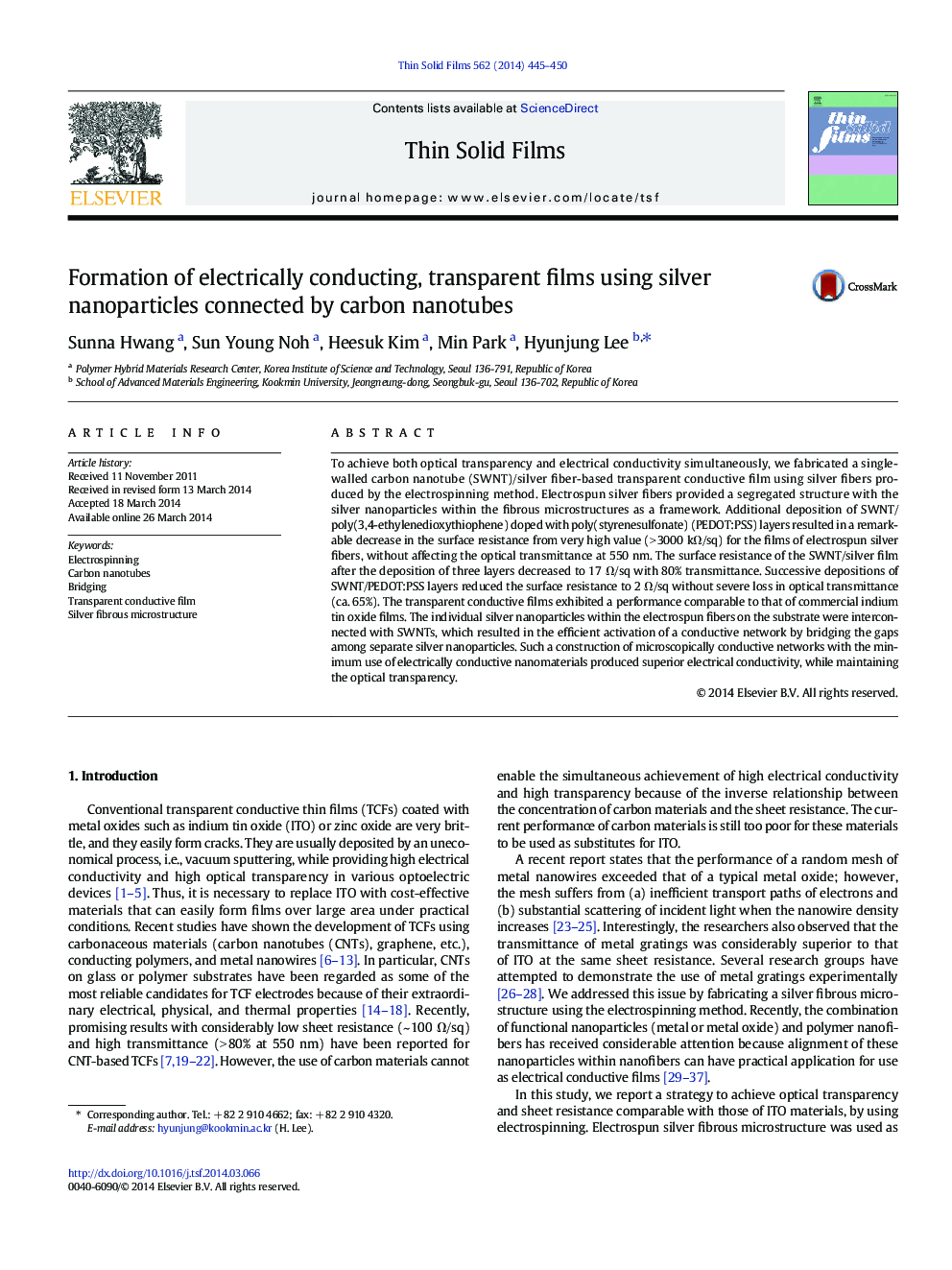| Article ID | Journal | Published Year | Pages | File Type |
|---|---|---|---|---|
| 1665215 | Thin Solid Films | 2014 | 6 Pages |
•Silver fibrous structures were produced by electrospinning method.•SWNTs/PEDOT:PSS was deposited on silver fibrous structures.•These films exhibited a low sheet resistance (~ 17 Ω/sq) at ~ 80% optical transparency.•Successive depositions of SWNT/PEDOT:PSS layers reduced the surface resistance to 2 Ω/sq.
To achieve both optical transparency and electrical conductivity simultaneously, we fabricated a single-walled carbon nanotube (SWNT)/silver fiber-based transparent conductive film using silver fibers produced by the electrospinning method. Electrospun silver fibers provided a segregated structure with the silver nanoparticles within the fibrous microstructures as a framework. Additional deposition of SWNT/poly(3,4-ethylenedioxythiophene) doped with poly(styrenesulfonate) (PEDOT:PSS) layers resulted in a remarkable decrease in the surface resistance from very high value (> 3000 kΩ/sq) for the films of electrospun silver fibers, without affecting the optical transmittance at 550 nm. The surface resistance of the SWNT/silver film after the deposition of three layers decreased to 17 Ω/sq with 80% transmittance. Successive depositions of SWNT/PEDOT:PSS layers reduced the surface resistance to 2 Ω/sq without severe loss in optical transmittance (ca. 65%). The transparent conductive films exhibited a performance comparable to that of commercial indium tin oxide films. The individual silver nanoparticles within the electrospun fibers on the substrate were interconnected with SWNTs, which resulted in the efficient activation of a conductive network by bridging the gaps among separate silver nanoparticles. Such a construction of microscopically conductive networks with the minimum use of electrically conductive nanomaterials produced superior electrical conductivity, while maintaining the optical transparency.
